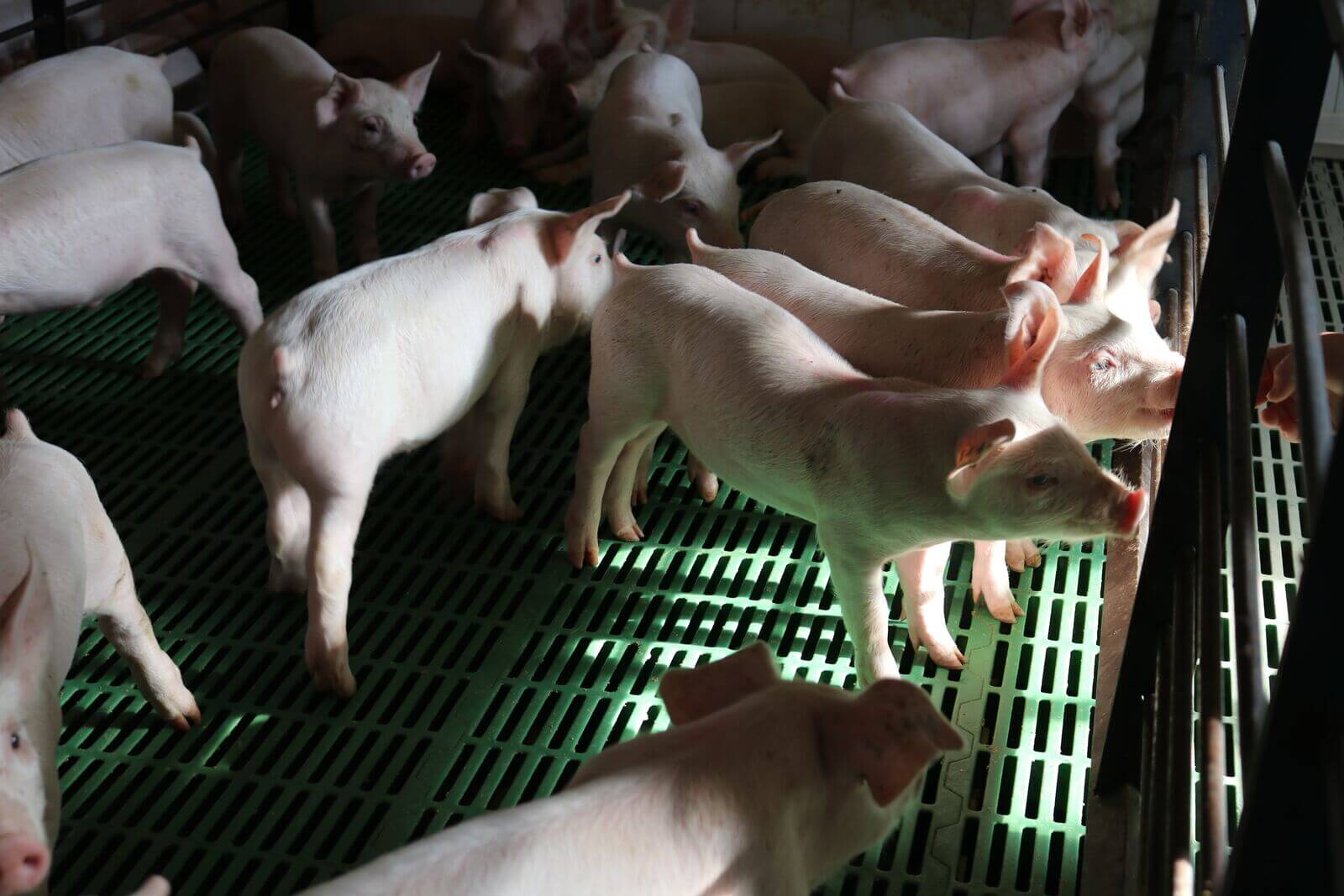Scoring Process
The value metrics presented in the results tables were calculated by the Illinois Soybean Association and an international checkoff-funded team of nutritionists and statisticians. They used amino acid concentration test results from samples of individual varieties planted in F.I.R.S.T. test sites since 2013. Each individual variety has its own Composite Meal Value and Composite Livestock Relative Value Score (RVS) for each test site in which it was planted. The average of these metrics is reported in the results tables by variety. The following provides a summary of the process:
- Each sample’s amino acid concentrations were the key input to its meal value estimates. Using statistical analysis and animal feed ration software, the value of the meal estimated to be produced by each sample was generated for multiple rations. The composite meal value is the average of the meal values in these rations, weighted by the amount of meal consumed in rations by livestock type in the U.S.
- This feed value estimation process solely focuses on the meal’s concentration of key amino acids. Therefore, variation in the meal’s energy component, which is likely small relative to protein, is not factored into the meal valuation process.
- The key difference between Composite Meal Value and the RVS is that the Composite Meal Value is an absolute measure of feed value while the RVS is a relative measure of feed value (relative to the estimated feed values of the meal estimated to be produced by the other varieties at the same F.I.R.S.T. test site). This means that a variety may produce a meal with high feed value but receive a low RVS if the other varieties in the same plot produce meal of even higher feed value.
Results from all varieties planted at F.I.R.S.T. test sites since 2013 are included in the results tables by brand unless the parent seed company specifically said that the variety was no longer in production. While these specific varieties were removed, other varieties no longer in production may be included in the results tables.
The information presented in the results tables is meant to inform decision makers on the past performance of individual soybean varieties. Users should be cautioned that past performance is not a guarantee of future results and that no statistical tests were conducted to determine the significance of the value estimates for individual varieties.
CALCULATION PHASES
There were three phases in calculating a Composite Livestock Relative Value Score (RVS) for each variety tested in the F.I.R.S.T. soybean variety trials since 2013. The following describes the phases:
Phase One: Estimation of the value of soybean meal that could be processed from the variety in broiler and hog finishing rations. (The following diagram illustrates the steps (in green circles) for a single variety):
- Variety samples at each test site were tested for protein, oil and amino acid composition.
- The composition values were then used to estimate soybean meal composition mathematically.
- The estimated meal composition values were used as inputs in statistical analysis and animal nutrition software to estimate the value of the meal in broiler and hog finishing rations per variety sample.

Phase Two: Calculation of a Composite Livestock Relative Value Score (RVS) at each F.I.R.S.T. test site. The following outlines the calculation steps for the Composite Livestock RVS (the diagram below illustrates the steps (in the gold circles) for a single variety at each test site):
- A weighted average of the broiler and hog finishing meal values per variety sample at each test site was calculated using the estimated meal value for the broiler and hog finishing rations, the estimated meal consumption per ration and number of animals fed in the United States per year.
- The average and standard deviation of all the varieties’ livestock meal value weighted averages were calculated for the test site.
- For each variety, the plot’s weighted average livestock meal value was subtracted from the variety’s livestock meal value weighted average and divided by the test site’s standard deviation. The result represents the number of standard deviations the variety’s composite livestock RVS is from the average of the test site.
- The variety’s result from step C is used to assign the variety its RVS for the specific F.I.R.S.T. test site.

Phase Three: Calculation of an average Composite Livestock Relative Value Score (RVS). This value, calculated by averaging the variety’s Composite RVSs for all F.I.R.S.T. test sites at which the variety was tested is reported in the summary table.
Maturity Groups and State measurements
These feed value results are based on testing in 10 states (DE, IA, IL, IN, KS, MD, MN, MO, ND, NE, OH, PA, SD, WI) where samples were collected from the F.I.R.S.T. trials. (Farmers Independent Research of Seed Technologies). Results within a maturity group will vary with growing conditions. Checkoff analysis of more than 50,000 samples shows the feed value tracks with the genetics.



